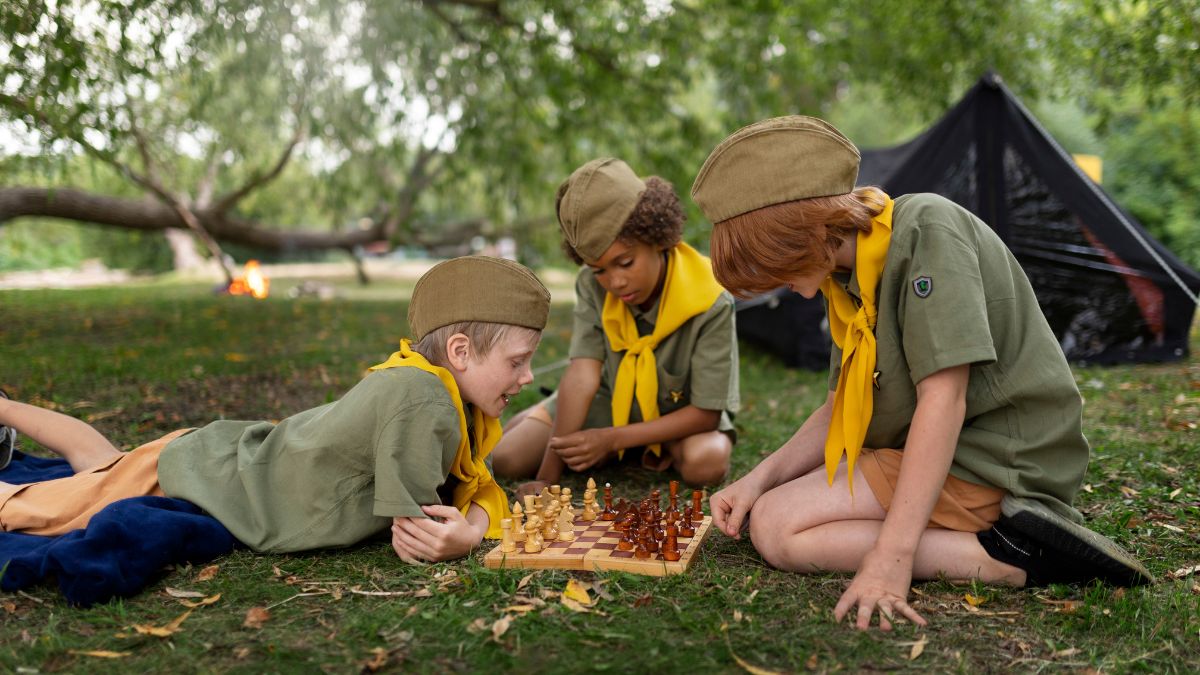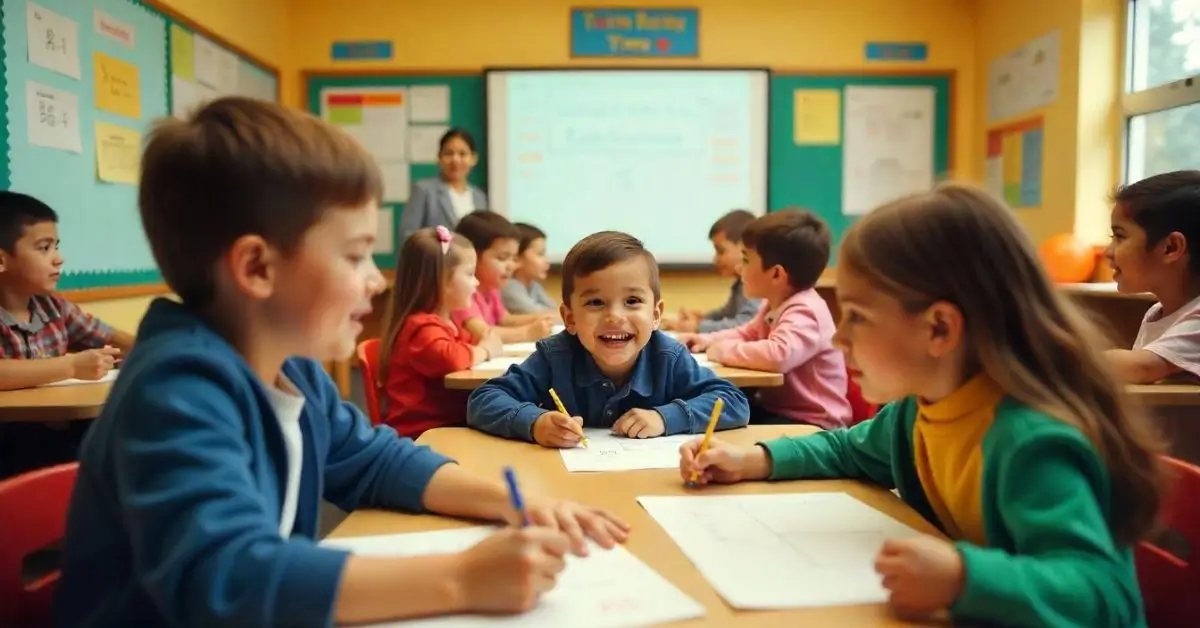Education
Online Nursing Programs: Are They Right for You?

In today’s digital age, online education has become a popular route for many aspiring professionals, and nursing is no exception. Online nursing programs offer flexibility and accessibility that traditional classroom settings often cannot match. However, deciding to enroll for an online nursing degree requires careful consideration of several factors, including learning style, personal responsibilities, and career goals. This article explores the advantages and potential drawbacks of online nursing programs to help you determine if this educational path aligns with your needs.
Advantages of Online Nursing Programs
Flexibility and Convenience: One of the most significant advantages of online nursing programs is their flexibility. Students can access coursework and lectures at times that suit their schedules, making it easier to balance school with work or family responsibilities. This flexibility is particularly beneficial for those who are already working as registered nurses and are looking to advance their education without taking a break from their careers.
Broader Access to Programs: Online programs can also expand your options for schools and courses. You are not limited to programs near your physical location, which is particularly advantageous for students in rural or underserved areas where educational institutions may be sparse. Additionally, online programs often offer a wider range of specialized courses that might not be available locally.
Cost-Effectiveness: Typically, online programs are more cost-effective than their on-campus counterparts. They often have lower tuition rates, and students save on commuting costs, campus fees, and sometimes even on course materials, as online courses frequently use digital resources.
Development of Technical Skills: Engaging with an online platform requires and enhances digital literacy. Students develop skills in navigating online learning management systems, utilizing digital communication tools, and accessing electronic health records—all of which are increasingly relevant in today’s tech-driven healthcare environments.
Potential Drawbacks of Online Nursing Programs
Lack of Hands-On Experience: One potential drawback of online nursing programs is the limited direct clinical experience. While many reputable online nursing programs incorporate local clinical placements, the hands-on learning opportunities might not be as robust or diverse as those available in traditional programs. Prospective students should ensure that the program provides adequate clinical experiences to meet licensure requirements.
Self-Discipline Required: Online learning requires a high level of self-discipline and motivation. Without the structure of a traditional classroom environment, some students may find it challenging to keep up with coursework and manage their time effectively.
Limited Interaction: Another concern is the reduced opportunity for face-to-face interaction with instructors and peers. While many online programs offer virtual office hours, discussion forums, and group projects to mitigate this issue, the level of engagement can vary significantly compared to in-person settings.
Evaluating if an Online Nursing Program is Right for You
When considering an online nursing program, assess your learning style, professional goals, and personal circumstances. Are you self-motivated and disciplined enough to succeed in a less structured environment? Does the program offer sufficient support and resources to help you overcome the challenges of remote learning? It is also essential to research the accreditation of the program to ensure it meets industry standards and will be recognized by employers and professional bodies.
In conclusion, online nursing programs can offer a viable path to advancing your education and career in nursing, provided they align with your learning preferences and life situation. With careful consideration and proper planning, enrolling in an online nursing program can be a strategically sound decision that propels your professional life forward while accommodating your personal needs.
Education
How Summer Camps Help Develop Social Skills and Independence in Kids

Summer camps have long been seen as a fun and enriching experience for children of all ages. Beyond the outdoor adventures, arts and crafts, and late-night campfire stories, these camps offer something far more impactful: growth in social skills and personal independence. As kids interact with peers, take on responsibilities, and face challenges in a supportive environment away from home, they learn life lessons that can stay with them for years. Summer camps are intentionally designed to be nurturing spaces where children step outside their comfort zones and into new roles that build confidence, communication, and self-reliance. The real magic lies in kids’ transformation as they engage with others, solve problems, and discover their strengths. Let’s examine how summer camps contribute significantly to children’s social and emotional development.

Encouraging Positive Peer Interaction
Summer camps are ideal settings for children to develop meaningful relationships with peers in a relaxed, screen-free environment. Away from school pressures and academic expectations, kids engage in group games, shared chores, and collaborative challenges that naturally build communication and trust. Activities are designed to promote cooperation rather than competition, helping children understand the value of teamwork and empathy. At many top camps near SF, for example, counselors foster inclusive environments where each child is encouraged to contribute and feel valued. These everyday interactions teach kids how to navigate social dynamics, resolve conflicts, and appreciate diverse perspectives, as those are skills that are crucial in childhood and throughout life.
Building Communication Skills Through Shared Experiences
One of the most valuable takeaways from summer camp is improved communication. Whether a child is naturally outgoing or reserved, camp environments foster dialogue through group activities, mealtimes, and storytelling sessions. Kids are encouraged to express themselves, contribute to team discussions, and ask for help when needed. These daily opportunities to converse in a variety of settings develop their ability to articulate thoughts, interpret social cues, and engage in meaningful conversations. Without the interference of digital distractions, children have more face-to-face interactions, allowing them to practice verbal and nonverbal communication in real time. These critical skills can help them succeed in school, relationships, and future careers.
Fostering Independence Through Responsibility
Being away from home provides kids with the perfect opportunity to step into a more independent role. At camp, they are responsible for waking up on time, keeping track of their belongings, following schedules, and completing daily tasks without parental oversight. While these might seem like small duties, they are significant in shaping a child’s sense of personal responsibility. The experience of solving problems independently gives children a sense of accomplishment. This sense of agency builds their self-confidence and motivates them to take initiative in other areas of their lives.
Offering a Safe Space to Make Mistakes and Learn
Mistakes are inevitable, and summer camp provides a safe space for kids to make them. Whether it’s forgetting a sleeping bag or misjudging a teammate’s reaction, children learn that errors are part of growth. With supportive counselors and peers, these moments become teaching opportunities. Rather than being criticized or overly corrected, campers are guided toward understanding what went wrong and how to make better choices next time. This encouragement builds resilience and self-awareness, key traits for navigating the complexities of adolescence and adulthood. The process of trial and error teaches children to bounce back, try again, and develop perseverance.
Encouraging Teamwork and Leadership
From group games to talent shows and community projects, summer camps thrive on teamwork. Children must often work together to achieve shared goals, which introduces them to leadership opportunities as well as collaborative roles. Campers might take turns being a group leader, planning skits, or helping younger campers learn new skills. These experiences foster a deeper understanding of group dynamics and what it means to contribute to a team. As kids learn how to lead and follow respectfully, they develop a sense of accountability and cooperation that is vital in school and future workplaces. The realization that everyone has something valuable to offer builds a stronger sense of community and self-worth.
Helping Kids Develop Self-Confidence
The supportive, inclusive nature of summer camps allows children to discover their abilities in a non-judgmental environment. Activities are designed to challenge kids just enough to push them beyond their comfort zones without overwhelming them. Whether it’s learning to swim, performing in a talent show, or climbing a rock wall, the sense of achievement that comes from overcoming fear or uncertainty is transformative. As children meet these challenges and celebrate their successes, they begin to see themselves as capable and resilient individuals. This boost in self-confidence carries over into school, sports, friendships, and family life, reinforcing a positive self-image.

Summer camps provide a unique blend of structure and freedom that nurtures both social development and personal independence in children. Through shared experiences, new responsibilities, and supportive guidance, campers gain important life skills that build their character and confidence. More than just a seasonal activity, camp is a foundation for lifelong growth, teaching kids how to connect with others, trust themselves, and embrace new challenges. It’s a life-changing journey for many, and it all starts with a few weeks away from home.
Education
The Intersection of Art and Data: Visual Storytelling Through Charts

Have you ever seen a chart that tells a story?
Using charts to show data helps you share ideas in a clear and easy way. When art meets data, it makes numbers simple and fun to understand. This helps you reach people better and make good choices.
Want to learn how to use charts to tell strong stories with your data? Start now and see how easy it can be to share your message with pictures and numbers!
Use Clear Titles and Labels
Clear titles and labels help viewers quickly understand what a chart is about. They act like a guide, showing the main idea without confusion. When titles are simple and direct, people can see the story behind the numbers right away.
Labels on axes and data points explain what each part means, making the information easier to follow. Avoid using vague or complicated words that might distract or confuse the audience.
Instead, focus on being straightforward so the message comes across clearly. This approach makes charts more effective and helps the audience stay engaged. For those who want to improve their skills in visual storytelling, it’s helpful to learn more about using clear titles and labels properly.
Choose the Right Chart Type
Different types of charts serve different purposes in showing data. Picking the right chart helps make the information clear and easy to understand. For example, some charts work best to show parts of a whole, while others are better for comparing groups or tracking numbers over time.
Using the wrong chart can confuse viewers or hide important details. Thinking about what story the data tells will guide the choice of chart type. Choosing wisely ensures that the message comes across quickly and clearly.
Exploring the strengths of each chart type can open new ways to present data more effectively. It’s helpful to explore options and consider which chart fits your needs best.
Add Color to Highlight Key Points
Colors can guide the viewer’s eye to the most important parts of a chart. Using color smartly helps key data stand out from the rest, making the story clearer and easier to follow.
Bright or bold colors draw attention, while softer tones can show background information without distraction. Careful color choices also help to group related data or show differences clearly.
Too many colors can confuse the message, so using just enough to highlight what matters is best. Thoughtful use of color turns simple charts into powerful tools for sharing data. Understanding how to apply color well can help make visual stories more effective and engaging over time.
Keep Designs Simple
Simple chart designs make it easier for people to understand the message without getting lost in extra details. Too many lines, colors, or decorations can distract from the main point. A clean layout helps the most important data stand out and keeps the focus clear.
Avoid adding things that do not help explain the data. Instead, aim for charts that are easy to read at a glance. A simple design does not mean boring-it means clear, strong, and direct.
This way, your message stays front and center. By keeping things simple, you can share information with ease and feel confident that your audience understands what you’re showing without confusion.
Use Shapes and Icons
Shapes and icons can add meaning to charts without using extra words. A well-placed symbol helps people understand the message faster by showing what the data is about. Circles, arrows, or simple icons can guide the eye and point out key parts of the chart.
These visuals also make data more interesting and easier to remember. It’s important to use them wisely-too many can be distracting. The goal is to support the message, not take attention away from it.
By choosing the right shapes and icons, you can help viewers stay focused and better understand the story in the data. This thoughtful use of visuals can make each chart more helpful and clear in its purpose.
Show Changes Over Time
Data that shows change over time helps tell stories about growth, decline, or trends. Charts that track time-like months, years, or even hours-can show patterns that are easy to follow.
A clear time line lets viewers see what happened first, what changed, and what stayed the same. These charts work best with steady spacing and simple labels, so the message is clear from start to finish.
It becomes easier to spot progress or shifts in behavior. Showing time in this way turns numbers into a story that unfolds step by step. Using this method brings data to life and makes it easier to understand how things develop or improve across different periods.
Compare Data Side by Side
Looking at data side by side helps people spot differences and similarities quickly. This method works well when showing how two or more items match up. Charts like bar graphs make it easy to compare values in a clear and balanced way.
By placing data next to each other, patterns and gaps become more noticeable. It also allows the viewer to make fair judgments without guessing. Spacing and size should stay even to keep everything easy to read.
This setup brings focus to the parts that matter most. Showing information this way makes it simple to draw conclusions and understand the full picture without confusion. Making side-by-side comparisons is a smart way to bring attention to what sets things apart.
Add Annotations or Notes
Small notes on a chart can explain important points and give meaning to numbers. Annotations help viewers understand why something happened or why a part of the data matters.
Arrows, circles, or short text can point out events, facts, or changes that aren’t clear at first glance. These added details can turn simple charts into strong stories by offering context.
Use only a few, and place them where they help the most. Good notes support the message and make each chart more helpful and easy to follow.
Bringing Data to Life Through Visual Stories
Turning data into visual stories helps others see meaning in numbers. Charts with clear design, smart details, and creative touches can turn facts into something people understand and remember.
Mixing art and data makes your message stronger and more engaging. With each chart, you build a story that connects with your audience. Keep exploring new ways to share your data through simple, powerful visuals.
Education
Classroom Relay: Engagement Strategy for Modern Classrooms

Classroom relay activities are rapidly gaining popularity among educators for their dynamic approach to student engagement, collaboration, and active learning. These fast-paced, team-based games encourage students to apply their knowledge in a fun, energetic way while reinforcing core academic concepts. With the increasing focus on interactive learning methods, classroom relay has emerged as a proven strategy to elevate participation and improve retention.
Rather than relying solely on lectures and worksheets, teachers are discovering that relay-style activities transform the classroom environment into a lively, collaborative learning space. Whether teaching math, language arts, science, or social studies, this method proves versatile and effective across all subjects and grade levels.
How Classroom Relay Works
A classroom relay typically involves dividing students into teams and having them complete a series of academic tasks in a sequential format. One student at a time from each group competes to solve a problem or complete an activity before tagging in the next teammate. The relay continues until all tasks are completed and one team emerges as the winner.
This format encourages healthy competition, builds teamwork, and makes repetition enjoyable. Teachers can customize tasks according to subject matter, skill level, and classroom goals. Common elements include writing answers on whiteboards, running to answer stations, or manipulating learning props.
Types of Classroom Relay Games
Academic Concept Relay
Students rotate through stations solving problems aligned with classroom content such as math equations, grammar challenges, or historical timelines. Each task reinforces recent lessons.
Physical and Cognitive Relay
In this version, physical movement (like jumping jacks or running) is combined with brain-based tasks. For example, students might solve a riddle before completing a physical challenge, then relay to the next teammate.
Creative Thinking Relay
This variation fosters creativity. Teams are challenged to complete artistic, writing, or problem-solving tasks. Examples include building a structure with classroom materials or crafting short stories in segments.
Benefits of Classroom Relay in Education
Classroom relay activities offer a wide array of advantages that enhance both teaching effectiveness and student learning outcomes. Some notable benefits include:
- Increased Engagement: Students remain active and focused due to the dynamic and interactive format.
- Collaborative Learning: Peer-to-peer support and teamwork are emphasized, fostering social and emotional learning.
- Improved Knowledge Retention: Kinesthetic and collaborative elements boost memory and understanding.
- Inclusive Participation: Every student contributes to team success, encouraging involvement from all skill levels.
Designing a Successful Classroom Relay
Step 1: Define Learning Objectives
Start by aligning relay tasks with specific academic goals. This ensures the activity remains purposeful and on-topic.
Step 2: Create Balanced Teams
To promote fairness and peer learning, mix students of varying abilities within each team. Consider rotating roles to ensure all students experience every part of the activity.
Step 3: Prepare Materials and Setup
Use color-coded stations, labeled task cards, or props to create a visually engaging setup. Organize materials in advance to prevent downtime.
Step 4: Establish Clear Rules
Ensure students understand the relay format, rules, and behavior expectations. Clearly explain scoring, transitions, and time limits.
Step 5: Debrief and Reflect
After the relay, lead a classroom discussion to reflect on the learning outcomes, teamwork, and individual performance. Use this time to reinforce the key concepts covered.
Classroom Relay vs Traditional Review Methods
| Feature | Classroom Relay | Traditional Review |
|---|---|---|
| Engagement Level | High (active & fun) | Moderate (passive) |
| Cost | Low | Low |
| Ease of Use | Moderate (planning needed) | High |
| Time Efficiency | Fast-paced | Variable |
| Student Collaboration | Strong focus | Minimal |
| Retention Rate | High | Moderate |
Tools and Supplies for Classroom Relay
- Dry erase boards and markers
- Task cards (printed or digital)
- Timer or stopwatch
- Props (cones, dice, tokens)
- Reward system (stickers, certificates)
Many classroom relay games require minimal cost and can be executed with everyday classroom items. Teachers can also use digital tools to display tasks and keep scores.
Real-World Applications and Quotes
According to leading education consultant Dr. Lisa Howarth, “Classroom relay games foster a collaborative spirit and reinforce academic concepts in a way that traditional methods often fail to do.”
Studies by the National Institute for Learning Outcomes Assessment show that physical engagement combined with academic tasks significantly boosts student performance and long-term knowledge retention.
Educators across the country are implementing classroom relay activities to better engage Gen Z learners who thrive in fast-paced, social environments.
Adapting Classroom Relay for Different Subjects
Math Relay
Each station contains problems ranging from simple arithmetic to complex algebra. Teams race to correctly solve them within time limits.
Language Arts Relay
Students identify grammar mistakes, complete analogies, or build compound sentences. Relay tasks can include writing creative story continuations.
Science Relay
Teams may label diagrams, match terms with definitions, or conduct mini-experiments. These reinforce inquiry-based learning and scientific vocabulary.
Social Studies Relay
Tasks include identifying countries on maps, sequencing historical events, or answering civics-based trivia questions.
Differentiation and Accessibility in Classroom Relay
- ELL Support: Use visuals, simplified language, and bilingual instructions.
- Special Needs: Modify physical tasks and offer alternative roles.
- Advanced Learners: Include bonus challenges or tiered questions.
Customizing the relay to accommodate all learners ensures inclusivity and maximizes participation.
Measuring the Impact of Classroom Relay
Educators can assess the effectiveness of a classroom relay by using the following methods:
- Formative Assessment: Monitor performance during tasks.
- Exit Tickets: Have students write reflections or solve a final question.
- Rubrics: Evaluate teamwork, participation, and content mastery.
- Surveys: Gather student feedback on enjoyment and learning impact.
Data collected from these tools help refine future relay activities.
Classroom Relay for Virtual Learning
Even in remote or hybrid classrooms, relay-style learning can be implemented using breakout rooms and online tools. Platforms like Google Forms, Jamboard, or Zoom whiteboards can replicate the team-based, sequential format.
Students can pass a “virtual baton” by tagging teammates through messages or emails, maintaining the relay’s core structure.
Challenges and Solutions
| Challenge | Solution |
|---|---|
| Classroom management | Use timers and clear rules to maintain order |
| Uneven participation | Rotate roles and assign varied tasks |
| Time constraints | Prepare materials ahead of time |
| Equipment limitations | Use flexible, low-tech alternatives |
Professional Development for Teachers
Incorporating classroom relay techniques may require initial training. Schools can host workshops where teachers:
- Practice creating relay tasks
- Share subject-specific relay ideas
- Discuss classroom management strategies
Professional development ensures teachers feel confident and prepared to apply this dynamic instructional method.
Conclusion:
Classroom relay is more than a game—it’s a modern teaching strategy that merges academic rigor with physical movement, collaborative spirit, and joyful learning. It addresses multiple learning styles and creates a positive classroom culture while boosting comprehension and engagement.
Educators who integrate classroom relay activities witness not just higher test scores but also improved classroom morale and motivation. By transforming passive learners into active participants, classroom relay empowers both students and teachers alike.
FAQ’s
What is a classroom relay?
A classroom relay is an interactive team-based activity where students complete academic tasks in a sequence, combining learning with movement and competition.
How do I set up a clasroom relay in a small classroom?
Use compact stations or rotate materials rather than students. Desk-based relays or virtual stations can make small spaces functional.
Can clasroom relay be used for all age groups?
Yes, the format can be adapted for elementary to high school students by adjusting complexity and themes.
Is clasroom relay suitable for virtual or hybrid classrooms?
Absolutely. Using tools like breakout rooms and collaborative documents allows relays to function in digital spaces.
How can I ensure that every student participates equally?
Assign roles, rotate tasks, and design challenges that require input from every team member to promote equity.
What subjects are best suited for clasroom relay?
Math, science, language arts, and social studies all work well. The key is tailoring tasks to the subject matter.

 Cartoon1 year ago
Cartoon1 year agoUnlocking the Potential of Nekopoi.care: A Comprehensive Guide

 Game1 year ago
Game1 year agoExploring Aopickleballthietke.com: Your Ultimate Pickleball Destination

 BUSINESS1 year ago
BUSINESS1 year agoWhat Companies Are In The Consumer Services Field

 BUSINESS1 year ago
BUSINESS1 year agoUnraveling the Mystery of 405 Howard Street San Francisco charge on Credit Card

 HOME IMPROVEMENT1 year ago
HOME IMPROVEMENT1 year agoVtrahe vs. Other Platforms: Which One Reigns Supreme?

 TECHNOLOGY1 year ago
TECHNOLOGY1 year agoThe Guide to Using Anon Vault for Secure Data Storage

 ENTERTAINMENT11 months ago
ENTERTAINMENT11 months agoUnderstanding Bunkr Album: A Comprehensive Guide

 ENTERTAINMENT1 year ago
ENTERTAINMENT1 year agoThe Epic Return: Revenge of the Iron-Blooded Sword Hound
















